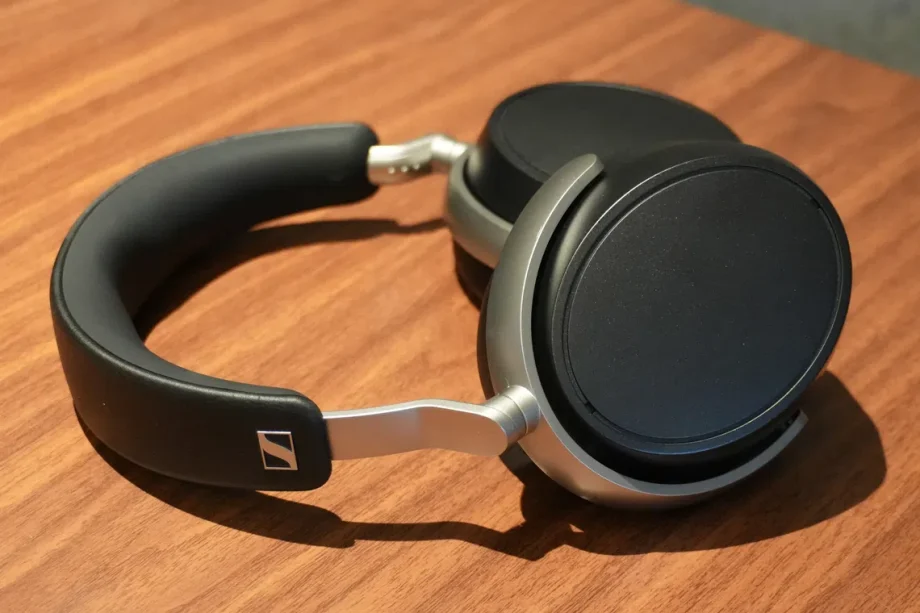The HDB 630 are Sennheiser’s newest headphones. They are the newest addition to its acclaimed HD series, which consists of fan favourites like the legendary HD 650 and the newer HD 550. The problem with the lineup is that it lacks an audiophile-grade wireless option. Those days are over, because the HDB 630’s party trick is that it’s able to listen to true high-resolution wireless audio from just about any source device, including iPhones.
To make that possible, Sennheiser is including a special wireless transmitter called the BTD 700 with the headphones. This transmitter plugs via USB into a source device and then transmit audio using high-resolution audio codecs such as aptX Adaptive and aptX HD. With this dongle plugged into your device, you can enjoy streaming music using high-resolution codecs that push Bluetooth audio to its very limits. It’s not quite true wireless lossless audio, but the HDB 630 gets remarkably close to wired fidelity. Crucially, the result is a pair of headphones that combine convenience and uncompromising audio quality better than almost anything else at this price point.
Comfort and everyday use

The headphones give a good seal even for those with slightly larger than average ears.
Photo: HWZ
At first glance, the HDB 630’s design looks eerily similar to the Sennheiser Momentum 4, and that’s because it utilises the exact same basic housing. However, Sennheiser has added several meaningful refinements, including a new leatherette headband for better durability, new anti-fingerprint coating on the earcups, and slightly deeper pads (4.5mm) for enhanced comfort.
These closed-back, over-ear headphones house 42 mm dynamic drivers, which are built in Sennheiser’s Tullamore factory in Ireland, and tuned for neutrality and fine detail. The headphones feel solid and well-constructed, though their aesthetic is rather bland, with a mostly matte black finish complemented by brushed metal accents to differentiate themselves from the Momentum 4.
Weighing 311g, the HDB 630 headphones are slightly bulkier than average and do not fold for storage. This may deter frequent travellers. However, the included carry case is robust and well-padded, making it easy to protect the headphones on the move. The headband padding and leatherette earcups provide a snug, secure fit suitable for multi-hour listening sessions, though, like most other closed-back headphones, they can feel warm in hot environments.
Despite their weight, the HDB 630 headphones are generally comfortable. The clamping force strikes a fine balance between stability and long-term wearability, with minimal pressure points. They are not quite as cloud-like as Sony’s WH-1000XM6, but they remain pleasant enough for hours of listening. Of course, fit is a personal thing and you mileage may vary.

The headphones even come with an airline adapter.
Photo: HWZ
Touch controls on the right earcup handle playback and calls, but their responsiveness is inconsistent. Volume adjustments sometimes register double swipes, and the single-tap play/pause gesture can easily be triggered by accident. The on-head detection feature can be overly sensitive and can pause content even when I’m readjusting the fit. While these quirks are minor, they stand out because I haven’t experienced such issues with competitors like Sony and Apple.
Thankfully, you can turn all these features off in the companion app if you wish. Still, it would be great if a future update allowed finer control instead of just switching them off completely, as that feels like a bit of a waste.
Connectivity and Features

Users will have to enable advanced sound quality under Audio mode priority to enable 24bit/96kHz listening.
Image: HWZ











